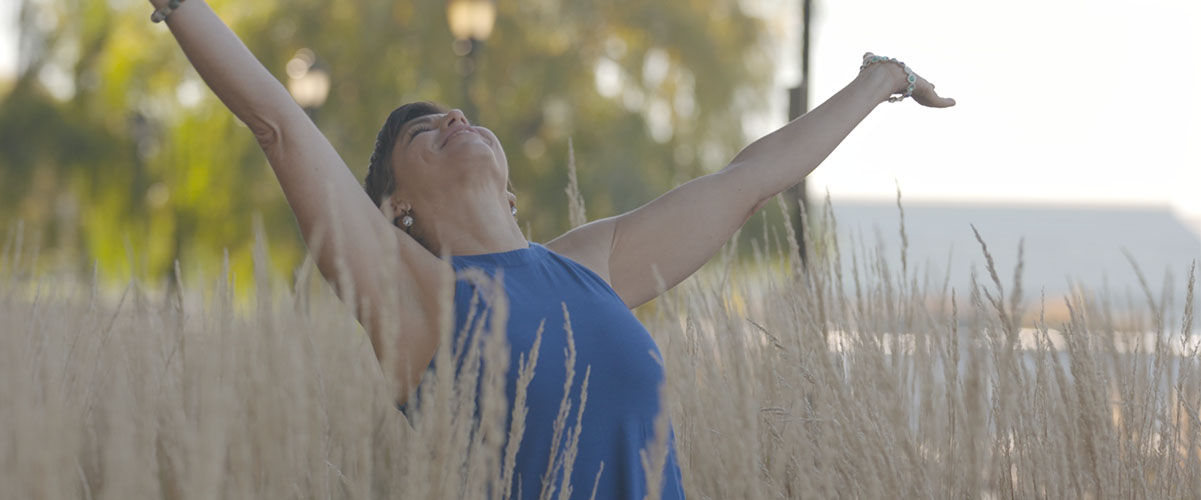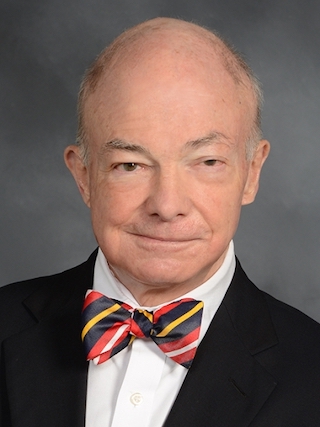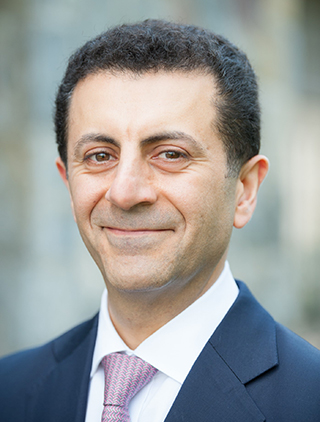From Trauma to Triumph: Amy Jordan’s Victory Dance
After being struck by a bus while crossing the street, dancer Amy Jordan was told her right leg needed to be amputated. But a team of nine NewYork-Presbyterian surgeons rebuilt her shattered limb, helping Jordan keep a promise she made to herself to one day dance again.


Amy Jordan’s memories from the afternoon of May 1, 2009, are a blurry patchwork of images. The dance instructor and real estate agent recalls crossing the street on Manhattan’s Upper West Side on her way to work. The next thing she remembers, “I was flat out on the pavement.”
Jordan was hit by a New York City bus, and lay trapped with her right leg pinned under a tire. When she was finally freed, “I had no skin on my leg, from my ankle to my thigh,” Jordan recalls. “My leg was crushed like a pancake.”
Taken to an emergency center nearby, Jordan was soon told her right leg would need to be amputated. But Jordan refused to accept that diagnosis, and instead sought other opinions. She reached out to Dr. Jason Spector, Chief of the Division of Plastic and Reconstructive Surgery at NewYork-Presbyterian/Weill Cornell Medical Center and Weill Cornell Medicine. Less than a week later, she was transferred to the William Randolph Hearst Burn Center at NewYork-Presbyterian/Weill Cornell Medical Center.

Dr. Jason Spector
“They literally started putting me back together, piece by piece,” Jordan says.
In the following weeks, under the care of multiple doctors and surgeons, Jordan underwent what would be the first of 20 surgeries to regain the use of her right leg.
A Vow is Made
In her heart, Amy Jordan was always a dancer. Growing up, she practiced many forms, including ballet and jazz. Though she’d been diagnosed with diabetes as a child, and suffered a medical setback that caused her to become legally blind in her early 20s, Jordan continued to dance.
Motivated to help others find a passion for dance and movement, in 1997 Jordan created Sweet Enuff, an organization that provides resources and health and wellness classes to young children affected by diabetes.
In the spring of 2009, Jordan was working in real estate while also managing group fitness initiatives at a city gym. But when a New York City bus struck Jordan in the street, her life came to a halt.
When she was eventually lifted into an ambulance, Jordan began chanting “nam myoho renge kyo” – a tradition of her SGI Buddhist practice, which Jordan describes as being rooted in self-determination. “Fortunately, that feeling of determination clicked into my psyche almost immediately,” she says.
In the back of that ambulance, among Jordan’s thoughts was a silent promise to herself: “One day, I will do a victory dance.”
A Slow and Steady Recovery
Giving Jordan back the use of her right leg ultimately required the expertise and commitment of nine NewYork-Presbyterian surgeons.
Doctors fastened a stabilizing fixator on her leg, and conducted hours-long surgeries to implant internal hardware. To replace the lost skin and soft tissue covering her leg, and also fight infection, surgeons transplanted muscles from her back to her leg, meticulously reattaching tiny arteries and veins under a microscope. They also performed skin grafting, borrowing skin from her left leg and adding it to her right – all in an effort to reconstruct her limb.
“It was one of the more devastating lower extremity injuries I have ever seen,” says Dr. Spector. “Between the Orthopedic and Plastic Surgery teams, we were able to build the foundations for her recovery.”
Jordan’s physicians also navigated new medical issues that arose during the course of her recovery, like a bacterial bone infection. A type 1 diabetic, Jordan was also diagnosed with a blockage that nearly caused a heart attack. “The level of attention and care from my doctors [was extraordinary],” Jordan says. “Other hospitals might have said, ‘No, we’re not [going to touch this case] with a 10-foot pole.’”

Dr. Palmer Bessey
Two months after the accident, Jordan was put to another test: taking her first steps. “When my doctor asked me, ‘How would you like to try walking?’ I started crying,” Jordan says. “I was still healing, I still had active skin grafts. But the choreographer in me took the walker and started [thinking in terms of dance moves]. I’d say, ‘Push the walker, one, two; left foot, three, four; hold right foot, five, six; stand up, breathe, seven, eight.’”
While Jordan physically endured each setback and surgery, surviving such traumas also called for immense courage and emotional resiliency. “Amy had to go through a long period of time of rebuilding her strength, her coordination, and enduring discomforts,” says Dr. Palmer Bessey, associate director of the William Randolph Hearst Burn Center. “And she kept at it – she kept at it.”
“The mind-body connection is extraordinarily important in medicine,” says Dr. Hooman Yaghoobzadeh, a cardiologist at NewYork-Presbyterian/Weill Cornell Medical Center, and clinical associate professor of medicine at Weill Cornell Medicine. “Being hopeful and being positive is very important to being able to achieve such medical milestones.”
Some days were tough. Some days were even tougher. “I’d cry, ‘I can’t do this,’” says Jordan. “But the nurses would say, ‘Yes, you can. Come on.’”
“Our victory was that we saved her leg and she could walk out of the hospital,” says Dr. Bessey. “Her victory was to dance again.”
A Triumphant Return to the Stage
While the desire to dance was always within Jordan, the road back to the stage was long and arduous. “It [took] many years [to figure] out how dancing would fit back [into my life],” says Jordan. “But never for a moment was I unwilling to get back on my feet in some capacity.”
Jordan continued rehabilitation and learned how to manage life with chronic pain. At a local gym, she figured out how to maneuver her new body. “That took some time,” she says.
Gradually, she returned to the spotlight in a new role. In 2014, she connected with a choreographer friend, and together they produced a dance show featuring performers from Alvin Ailey American Dance Theater, Juilliard, and the Rockettes. “I called it ‘The Victory Dance Project,’” Jordan says.
“This has become my mission, to not be a victim of my circumstance.”— Amy Jordan
The show debuted in May of 2014, to a sold-out New York City crowd. “The mission of the company is to make the impossible possible with the power of movement,” Jordan says.
And in June of 2017, Jordan danced onstage with her Victory Dance Project, fulfilling the vow she made to herself in the back of that ambulance eight years prior.
“It was a moment about being OK with what I could no longer do, and enjoying what I now could do.”
And she dedicated that performance to her NewYork-Presbyterian care team. “So many things could have gone so drastically wrong [during my recovery]. But I’m alive and walking because of them,” she says.
“I labeled my group of doctors The Dream Team. And during my first Christmas home from the hospital, I got them all T-shirts that said so.”
The Strength of the Human Spirit
In 2018, Jordan shared her survival story in a book, Dance Because You Can: 5 Steps to Transform Trauma Into Triumph. And on May 13, 2022, a documentary film by Brian Thomas that captures powerful moments of her struggle to recover will be released. It’s called Amy’s Victory Dance.

Dr. Hooman Yaghoobzadeh
“To me, the movie is a story about the human condition; it’s about how we deal with the reality of life and what we can make of it,” Jordan says. “I hope it’s encouraging and inspiring to people.”
Jordan continues to choreograph and teach young dancers, an endeavor she finds thrilling. And she continues to undergo surgeries, recently having what she calls “a 10-year tuneup.”
“As challenging as it was to reconstruct her leg, only a special person like Amy could persevere through the multiple subsequent procedures and years of painful rehabilitation to get to the point where she could appear on stage in a performance,” says Dr. Spector.
Above all, Jordan remains focused on the here and now. When her mind begins to ruminate on the things she was once able to do, she reframes her thoughts around all the things she can do today. “This has become my mission, to not be a victim of my circumstance,” she says.
“The [skeleton] was broken, the heart was broken, [but] the spirit was never broken,” says Dr. Yaghoobzadeh. Jordan’s will, her determination, he says, is likely the reason she is standing – and dancing — today.
Click here to download Amy’s Victory Dance. One dollar of every download purchased will go to benefit the William Randolph Hearst Burn Center.
Watch Amy Jordan’s story on NewYork-Presbyterian’s Instagram channel.
View this post on Instagram

